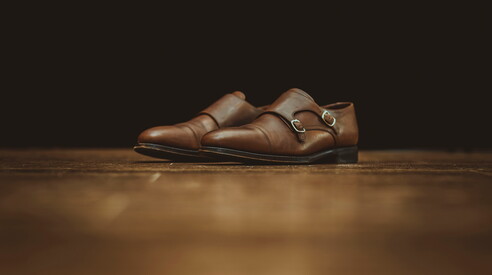Slow fashion itineraries around our archives: a significant proposal


Photo by Jia Ye on Unsplash
The Prides of Fashion
From Stra to Castrette di Villorba, passing through Turbigo and Biella: provincial towns and home to the archives of historic fashion brands. An excursion out of town.
On the same topic:
Far removed from the overtourist routes, provincial towns like Stra, Castrette di Villorba, and Turbigo, as well as cities like Biella, nonetheless preserve a small treasure, a shared excellence. They are all, in fact, home to the archives of historic fashion brands . In Stra, the Villa Foscarini Rossi Footwear Museum, created in 1993 by Luigino Rossi in the splendid seventeenth-century villa commissioned in the mid-17th century by Jacopo Foscarini from architects Vincenzo Scamozzi and Francesco Contini, is now part of the LVMH group, along with the shoe factory; the Benetton archive; the footwear collection of Andrea Pfister, a brilliant and unforgettable designer; and the Fila archive. All of them, including the famous Max Mara corporate archive, are located in the heart of Italy's manufacturing province, the cradle of the Made in Italy label that we hope will continue to make us world-famous. A province that also often offers landscapes favored by fortune and the inevitable food and wine excellence: our connection with food is practically a dogma, but if culinary discoveries were combined with the history of fashion and craftsmanship, the opportunities for tourism that is perhaps a little niche but rewarding and not predictable would multiply .
A necessary step: I'm biased, an enthusiastic archive addict, and while I don't like the uncritical use of vintage as inspiration, which often amounts to slavish copying, I think fashion archives are always treasures of culture, know-how, and care.
For this reason, I would add an entry to Jennifer Craik's essay "Fashion, Tourism and Global Culture," a decade-old but still valuable study by the Australian academic. Craik addressed this particular topic by identifying ten types of fashion tourism, but, strangely, not visits to archives. She analyzes categories ranging from trips to exhibitions to "expeditions" to purchase traditional clothing in remote areas or luxury items in large cities: shopping that today is contrasted like a nemesis by the compulsive purchase of very low-cost products to complement visits to art cities—one of the consequences of overtourism—and the related proliferation of ultra-fast fashion shops in historic centers. Craik does not devote space to fashion archives and foundations, perhaps because they are less widespread outside of Italy, but in our country, promoting them to make a place more attractive to tourists would be an opportunity not to be missed .
If today the global and lifestyle experience captures people's interest more than the actual products themselves, the added value of both increases at the intersection between the different supply chains, be they fashion, art, craftsmanship, agri-food, sport, or wellness.
The connection between local identity and fashion excellence stems from a fascination with brand heritage and a focus on the production process of garments and accessories, the manufacturing and production processes that, not surprisingly, are so popular on Instagram and TikTok, transforming purchases into experiences that benefit the entire region.
Broadening the discussion, or literally, the itinerary, this virtuous circle also includes museums dedicated to manufacturing (Prato is not just a manufacturing hub, the Textile Museum is one of the most important on the history of weaving), production sites and workshops that are still able to demonstrate artisanal and special processing techniques.
After all, if Murano has built a business not only on the sale of glass objects but also on visits to glassworks, it's not out of place to consider including a visit to an embroidery factory or an institution like the Lisio Foundation in Ponte a Ema (weaving high-quality velvets, jacquards, and brocades on ancient hand-looms) between a visit to the Prada archive in Valvigna (a hope for further openings and special events, to be monitored carefully) and the pursuit of culinary pleasures. Slow Fashion tourism: not a last-minute idea for August, but rather an "off-season" pleasure, with temperatures suitable for intellectual gratification, unobstructed landscapes, and seasonal local produce.
Fortunately, fashion-themed excursions don't have to be limited to more or less luxury outlets, and it's not out of place to imagine future regional synergies : archives, businesses, and foundations—no longer just individual brands that understood the importance of historical documentation of their work before others, but districts for the promotion of entire areas where the ability to do things well has developed.
In Emilia Romagna, for example, a region that has always been attentive to promoting tourism, the Create-Creativity and Culture cluster (or rather, Clust-ER) - an association of businesses, foundations, and associations for strengthening the production system - identifies strategic sectors such as fashion, digital culture, new business systems, and of course tourism in its value chain. The foundations are there, therefore, in this region as in many others, but it is necessary to connect them, "join the dots" with a bit of originality, also starting from as yet unknown and precious archives .
More on these topics:
ilmanifesto



